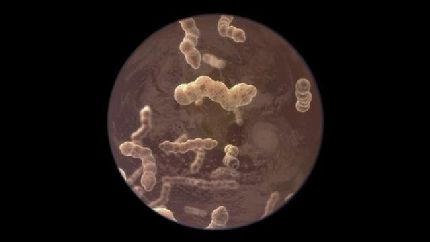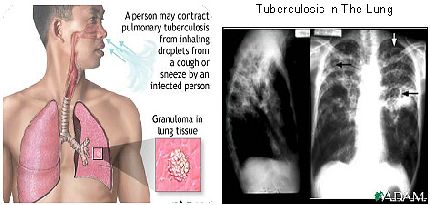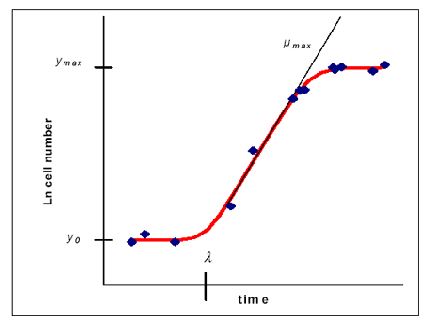Sinuses are air-filled spaces in the skull (on the forehead, nasal bones, cheeks and eyes), which are lined with mucous membrane. Healthy sinuses contain no bacteria or other microorganisms. Normally, mucus can drain and air can circulate. When the sinus openings blocked or too much mucus accumulates, bacteria and other microorganisms can grow more quickly. Small hairs (cilia) in the sinuses, which help move mucus in the lease, not working properly due to some diseases. Colds and allergies can cause too much mucus to be blocked or open sinuses. Deviated nasal septum, nasal bone spur, or
can block the opening of sinuses. Acute sinusitis is usually caused by bacterial infection in the sinuses that the result of upper respiratory tract infection. Chronic sinusitis refers to long-term swelling and inflammation of the sinuses, which may be caused by bacteria or fungi. Diseases that prevent cilia from working properly, such as Kartahenera syndrome and syndrome of fixed cilia. The weakening of the immune system or the classic symptoms of acute sinusitis in adults are usually cold, that does not improve, or one that worsens within 5 - 7 days after onset of symptoms. Symptoms include:
cough, often nighttime
Headache - pressure like pain, pain behind the eye, a tooth, or a person tenderness
Symptoms of chronic sinusitis are the same as acute sinusitis, but is usually softer and longer than 12 weeks. High, along with a dark nasal discharge for at least 3 days
nasal discharge, with or without cough, which is present for more than 10 days and not improving
regular sinus X-rays are not very accurate for the diagnosis sinusitis. Viewing the sinuses through a fiber-optic scope (called the bow or rinoskopii) may help diagnose sinusitis. This is usually done doctors who specialize in ear, nose and throat problems (ENT). However, these tests are not very sensitive in detecting sinusitis. Sinuses can also be used to help diagnose sinusitis or evaluate the anatomy of the paranasal sinuses to determine the operation will be profitable. If sinusitis is thought related to the tumor or fungal infection
sinuses may be necessary. If you or your child has chronic or recurrent sinusitis and other tests may include:
Nasal Apply warm, wet washcloth to your face several times a day. Drink plenty of fluids to keep mucus thin. Inhale steam 2 - 4 times a day (like sitting in the bathroom with the shower running). Spray with nasal saline several times a day. Use a humidifier. Use pot nety clear sinuses. Be careful with over-the-counter nasal spray products. They may help at first, but use them for more than 3 - 5 days can actually worsen nasal congestion. In addition, for sinus pain or pressure:

avoid flying when you are overwhelmed. Avoid extreme temperatures, extreme temperatures and, leaning forward, head down. Try acetaminophen or ibuprofen. Antibiotics are usually not required for acute sinusitis. Most of these infections are on their own. Even when antibiotics do help, they may only slightly reduce the time you or your child is sick. Antibiotics may be prescribed prior to:
Children with secretions from the nose, possibly with a cough that is not getting better after 2 - 3 weeks
Fever higher than 102. 2 `Fahrenheit (39 Celsius')
Acute sinusitis should be treated within 10 - 14 days. Chronic sinusitis should be treated within 3 - 4 weeks. Some people with chronic sinusitis may require special medications to treat fungal infections. At some point, your doctor will consider other medication over the counter, further testing, or directions to an ear, nose and throat (ENT) or an allergy specialist. Nasal spray corticosteroids and antihistamines to reduce swelling, especially in the presence of nasal polyps or allergic
Surgery to clean and drain the sinuses may also be necessary, especially in patients whose symptoms can not go through 3 months, despite treatment, or in patients with two or three episodes buy strattera online of acute sinusitis per year. ENT specialist (also known as otolaryngologist) for this operation. Most fungal infections are needed sinus surgery. Surgical repair of curvature of the nasal septum or nasal polyps can prevent the condition returning. Sinus infections are usually treated with self-measures and treatment. If you have recurring attacks, you should be checked for causes such as polyps or other problems such as allergies. Although very rare, complications can include:
bone infection (infection of the skin around the eyes (you have severe headache, hopeless over the counter pain medicine
green or yellow discharge does not necessarily indicate sinusitis or need antibiotic. Eat lots of fruits and vegetables that are rich in antioxidants and other chemicals that can boost your immune system and helps the body resist infection. Get a flu vaccine every year. reduce stress. Wash your hands often, especially after shaking hands with others. Avoid smoke and pollutants. Drink plenty of fluids to increase moisture in your body. Take dekonhestantov with upper respiratory tract infection. Treatment of allergies quickly and appropriately. Use a humidifier to increase moisture in the nose and sinuses ... Hospital Cincinnati Children's Medical Center in evidence-based care management of acute bacterial sinusitis in children 1 to 18, Cincinnati (Ohio). Cincinnati Children's Hospital Medical Center, 2006 Slavin RG et al diagnosis and treatment. sinusitis: updated practice parameter J Allergy Clin Immunol 2005 116 .. S13-S47 Rosenfeld RM, Singer M, Jones S. Systematic review of antimicrobial therapy in patients with acute rhinosinusitis Otolaryngol Surg Head Neck 2007; 137: ... S32 ..-S45 Rosenfeld RM, Andes D, N Bhattacharya, Cheung D, S Eisenberg, Ganiats TG and other clinical practice: adult sinusitis Otolaryngol Surg Neck Chapter 2007, 137: .. S1-S31 Updated: ADAM editorial ... David Zieve, MD, Internal Affairs, and David R . Elts previously considered Seth Schwartz, MD, MPH, otolaryngologist, Virginia Mason Medical Center, Seattle, Washington (4/18/2010) ADAM, Inc is accredited by URAC, also known as the American Accreditation Commission for Health (www. URAC. org). URAC in
is an independent audit to verify that ADAM should be strict standards of quality and accountability. ADAM is among the first to achieve this important distinction for online information and services. Find out more about Adam, and
. ADAM is also a founding member of Hi-Ethics and supports the principles of the Health on Net Foundation (www. soap. h). information described in this document should not be used in any medical emergency or for the diagnosis or treatment of any any disease. licensed should consult a doctor for diagnosis and treatment of any disease. Call 911 for all emergency medical service. Links to other sites for information only -. they are not approved such sites Copyright 1997-2012, ADAM, Inc Any -copying and distribution of the information contained herein is strictly prohibited



